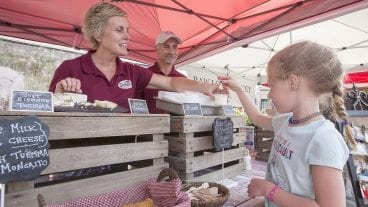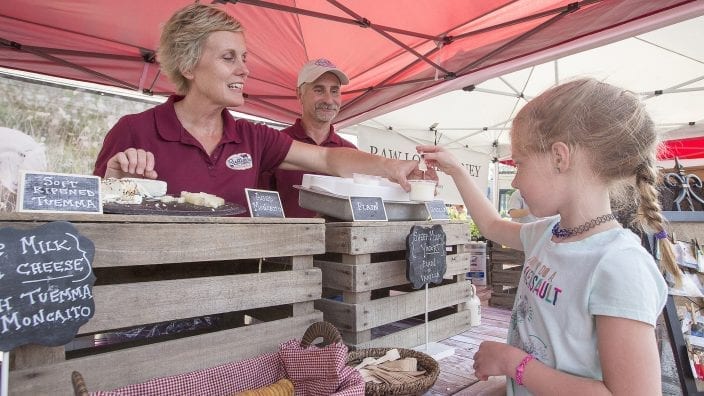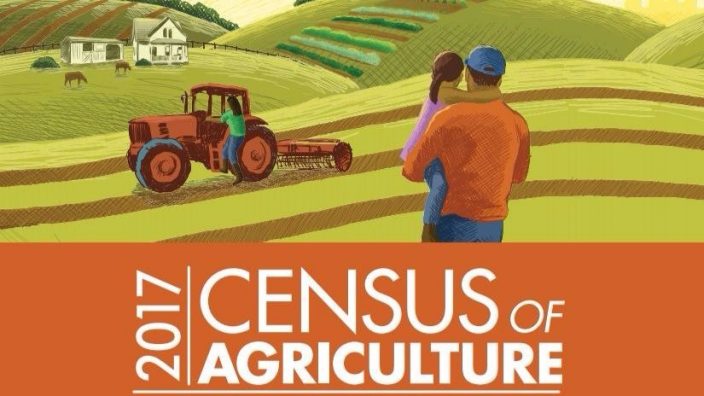Farmer’s Guide to Trucking Regulations available to Ohio Farm Bureau members
The guide includes a farm driver checklist, overview of state and federal regulations and exemptions, CDL qualifications and more.
Read More
The U.S. Department of Agriculture’s (USDA) National Agricultural Statistics Service (NASS) started mailing the 2017 Census of Agriculture to the nation’s producers the week of Nov. 27. Conducted once every five years, the census aims to get a complete and accurate picture of American agriculture. The resulting data are used by farmers, ranchers, trade associations, researchers, policymakers, and many others to help make decisions in community planning, farm assistance programs, technology development, farm advocacy, agribusiness setup, rural development, and more.
“The Census of Agriculture is USDA’s largest data collection endeavor, providing some of the most widely used statistics in the industry,” said U.S. Secretary of Agriculture Sonny Perdue. “Collected in service to American agriculture since 1840, the census gives every producer the opportunity to be represented so that informed decisions can support their efforts to provide the world with food, fuel, feed, and fiber. Every response matters.”
The census will be mailed in several phases through December. Farm operations of all sizes which produced and sold, or normally would have sold, $1,000 or more of agricultural product in 2017 are included in the census. The census is the only source of uniform, comprehensive, and impartial agriculture data for every state and county in the nation.
NASS revised the census forms in an attempt to document changes and emerging trends in the industry. Changes include a new question about military veteran status, expanded questions about food marketing practices, and questions about on-farm decision-making to help better capture the roles and contributions of beginning farmers, women farmers, and others involved in running a farm enterprise.
“Producers can respond to the census online or by mail. We highly recommend the updated online questionnaire. We heard what people wanted and we made responding to the census easier than ever,” said NASS Administrator Hubert Hamer. “The online questionnaire now has time saving features, such as automatic calculations, and the convenience of being accessible on mobile and desktop devices.” Note: To complete the survey online, producers need their unique 17-digit Survey Code from the address label on the paper questionnaire or letter received in the mail.
The census response deadline is Feb. 5, 2018. Responding to the Census of Agriculture is required by law under Title 7 USC 2204(g) Public Law 105-113. The same law requires NASS to keep all information confidential, to use the data only for statistical purposes, and only publish in aggregate form to prevent disclosing the identity of any individual producer or farm operation. NASS will release the results of the census in February 2019.
For more information about the 2017 Census of Agriculture, visit the census website or call (800) 727-9540.


The guide includes a farm driver checklist, overview of state and federal regulations and exemptions, CDL qualifications and more.
Read More


Ohio Farm Bureau provides opportunities, platforms and resources to help you develop your voice in the industry and give farmers a seat at the table with leaders and legislators.
Read More

The emergency fuel waiver to allow the sale of summer gasoline blends containing 15% ethanol will lengthen the period during which Americans can continue buying E15 from June 1 to Sept. 15.
Read More

The Small-Scale Food Business Guide covers federal and state regulations for selling food products such as raw meat, dairy, eggs, baked goods, cottage foods, fruits and vegetables, honey and more.
Read More

New resources and technology are broadening the different types of sales tools and strategies available to farmers.
Read More

ODA will enroll 500,000 acres into the program for a two-week sign-up period, beginning April 22, 2024, through May 6, 2024. Contact local SWCD offices to apply.
Read More

Katie Share of Columbus has been named ExploreAg and Youth Development Specialist for Ohio Farm Bureau.
Read More

Mary Klopfenstein of Delphos has been named Young Ag Professional and Ag Literacy Program Specialist for Ohio Farm Bureau.
Read More

The plan has been updated to give sole proprietors access to more rate stability and a smart solution that offers potential savings on health care.
Read More

The American Farm Bureau Federation, in partnership with Farm Credit, is seeking entrepreneurs to apply online by June 15 for the 2025 Farm Bureau Ag Innovation Challenge.
Read More